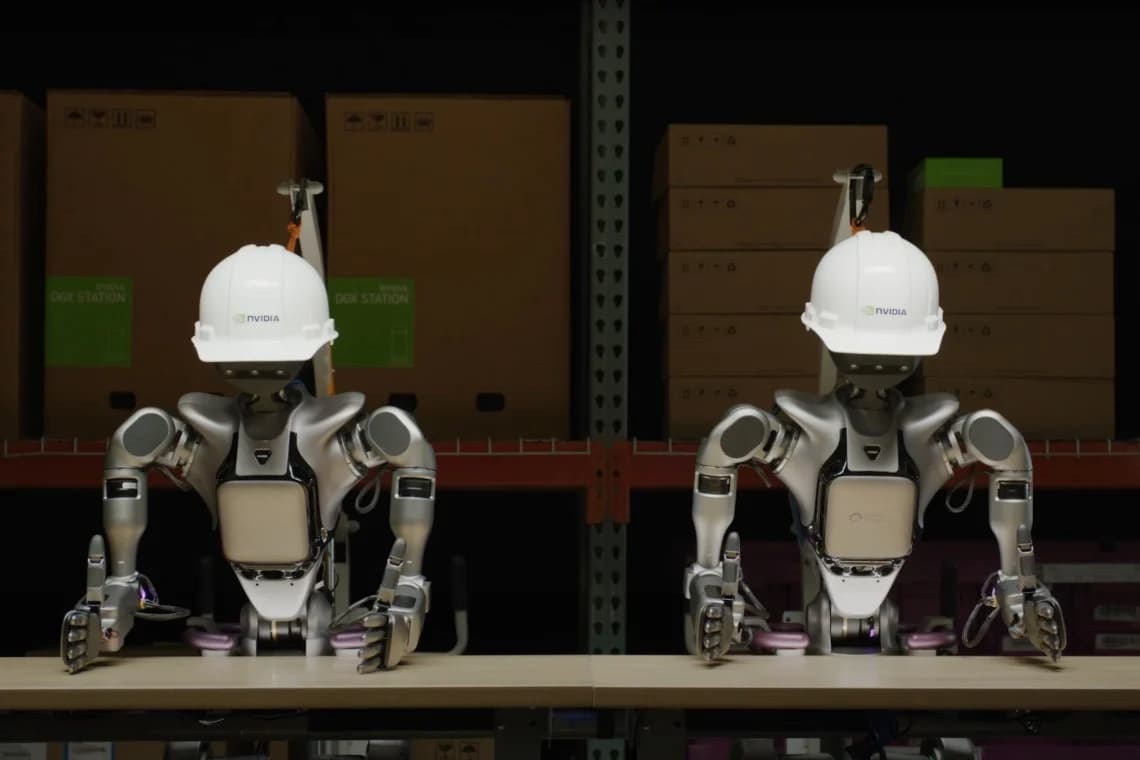NVIDIA has recently unveiled a suite of groundbreaking technologies aimed at accelerating the development of humanoid robots, signaling a significant leap forward in the field of robotics and artificial intelligence. Among the key announcements is NVIDIA Isaac GR00T N1, hailed as the world’s first open and fully customizable foundation model designed to imbue humanoid robots with generalized reasoning and skills.
According to NVIDIA, GR00T N1 is the first in a planned family of pretrained models intended for global robotics developers, with the overarching goal of transforming industries grappling with substantial labor shortages. Jensen Huang, NVIDIA’s founder and CEO, proclaimed that “the age of generalist robotics is here,” emphasizing the potential of GR00T N1 and the new data-generation and robot-learning frameworks to unlock the next frontier in AI.
The GR00T N1 foundation model boasts an innovative dual-system architecture inspired by human cognition. “System 1” operates as a fast-thinking action model, akin to human reflexes or intuition, while “System 2” functions as a slower, more deliberate decision-making system. Powered by a vision language model, System 2 can reason about its surroundings and received instructions to formulate action plans, which System 1 then translates into precise and continuous robot movements. Notably, System 1 is trained using both human demonstration data and a massive amount of synthetic data generated by NVIDIA’s Omniverse platform.
This advanced model demonstrates the ability to generalize across a range of common tasks, including grasping, moving objects with single or both arms, and transferring items. It can also handle complex, multistep tasks that demand long-term context and a combination of general skills applicable to areas like material handling, packaging, and inspection. Developers have the flexibility to further refine GR00T N1 for their specific humanoid robot or task through post-training using either real or synthetic data. A demonstration at GTC showcased a humanoid robot from 1X autonomously performing domestic tidying tasks using a policy built upon a post-trained GR00T N1.
Furthermore, NVIDIA is fostering collaboration to advance the field. A significant partnership with Google DeepMind and Disney Research has been announced to develop Newton, an open-source physics engine specifically designed for robot development. Built on NVIDIA’s Warp framework, Newton aims to enable robots to learn how to manage complex tasks with enhanced precision and is designed to be compatible with simulation frameworks like Google DeepMind’s MuJoCo and NVIDIA Isaac Lab. Disney Research intends to be among the early adopters of Newton to further their robotic character platform, including the expressive Star Wars-inspired BDX droids. According to Nvidia, Newton is expected to help robots become more “expressive” and “learn how to handle complex tasks with greater precision” by allowing developers to simulate robot interactions with various real-world elements. An early, open-source version of Newton is planned for release later in 2025.
Addressing the critical need for extensive and diverse training data, NVIDIA also introduced the Isaac GR00T Blueprint for synthetic manipulation motion generation. This blueprint, built on Omniverse and NVIDIA Cosmos Transfer world foundation models, allows developers to generate vast amounts of synthetic motion data for manipulation tasks from a limited number of human demonstrations. NVIDIA demonstrated the power of this approach by generating the equivalent of 6,500 hours of human demonstration data in just 11 hours, leading to a 40% improvement in GR00T N1’s performance when combined with real data. To further support the developer community, NVIDIA is releasing the GR00T N1 dataset as part of a larger open-source physical AI dataset, now available on Hugging Face.
The GR00T N1 training data, task evaluation scenarios, and the Isaac GR00T Blueprint are currently available for download. These advancements, along with collaborations like the one with Disney and Google DeepMind, underscore NVIDIA’s commitment to driving innovation and accelerating progress in the exciting field of humanoid robotics. The availability of these tools and models promises to empower developers worldwide to create more capable and adaptable robots for a wide range of applications.


